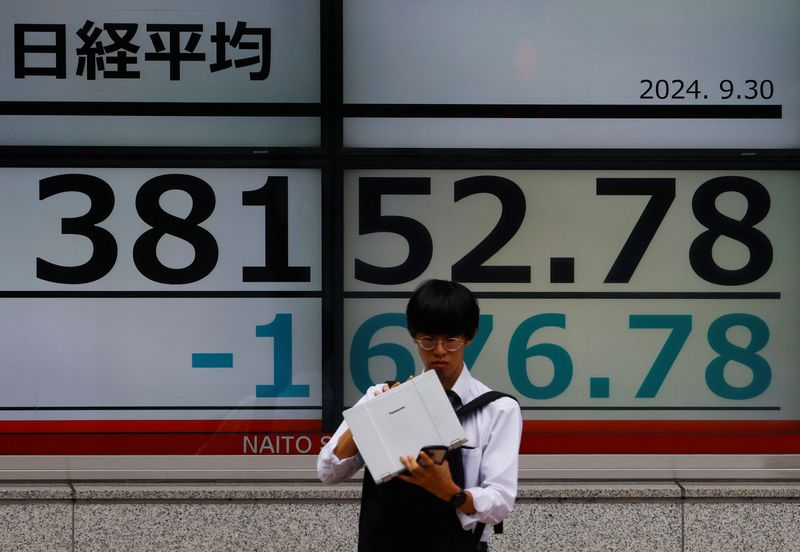
SYDNEY (Reuters) -Asian shares rallied on Monday after a benign reading on U.S. inflation restored some hope for further policy easing next year, while there was relief that Washington had averted a government shutdown.
After the bonanza of recent central bank decisions, this week is much quieter with only the minutes of a few of those meetings due. There are no Federal Reserve speeches and U.S. data is of secondary importance.
Otherwise the themes were largely the same, with the dollar underpinned by a relatively strong economy and higher bond yields, which in turn is a burden for commodities and gold.
It is also a headache for emerging market countries, which are having to intervene to stop their currencies from falling too far and stoking domestic inflation.
For now, the afterglow from the U.S. inflation report was enough to lift MSCI’s broadest index of Asia-Pacific shares outside Japan by 0.3%.
Japan’s Nikkei gained 1.2%, while the Topix automaker index climbed 1.3% helped by signs of progress in a potential merger between Honda and Nissan.
South Korean shares climbed 1.3%, while Taiwan’s market bounced 2.6%.
Chinese blue chips rose 0.7%, as 10-year bonds yields hit a fresh record low of 1.665% despite efforts by the central bank to stop the relentless decline.
EUROSTOXX 50 futures dipped 0.2%, while FTSE futures and DAX futures were near flat.
S&P 500 futures added 0.4%, while Nasdaq futures firmed 0.6%. The S&P 500 fell almost 2% last week and the Nasdaq 1.8%, though the latter is still up 30% for the year.
Analysts at BofA noted the S&P 500 was up 23% for the year, but if the 12 largest companies were excluded the gain was only 8%. They cautioned such extreme concentration was a vulnerability going into 2025.
Wall Street had rallied on Friday when a key gauge of core U.S. inflation printed lower than expected at 0.11%, providing a partial antidote to the Fed’s hawkishness earlier in the week.
FEWER CUTS
Fed funds futures swung to imply a 53% chance of a rate cut in March and 62% for May, though they only have two quarter-point easings to 3.75-4.0% priced in for all of 2025. A few months ago, the market had hoped rates would bottom around 3.0%.
The prospect of fewer cuts has combined with expectations of more debt-funding government spending to pressure bond markets, with 10-year yields surging almost 42 basis points in just two weeks for the biggest such increase since April 2022.
“The recent firming in core inflation has interacted with a rising threat of tariffs and immigration restrictions to temper the Fed’s inflation optimism,” said JPMorgan economist Michael Feroli.